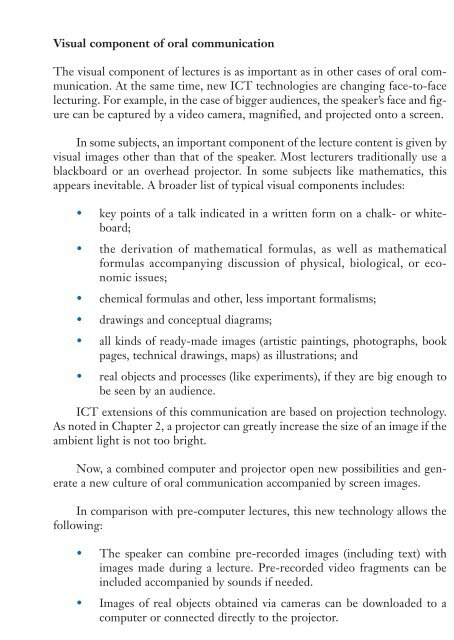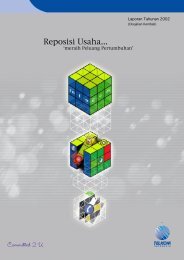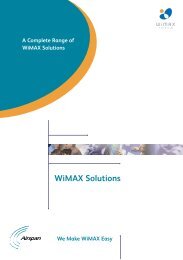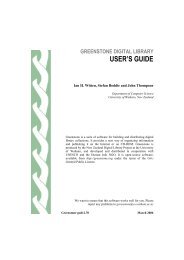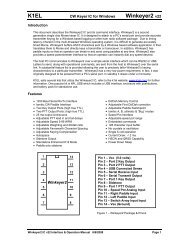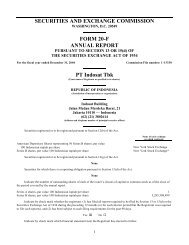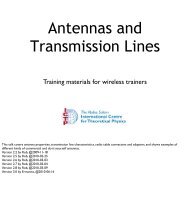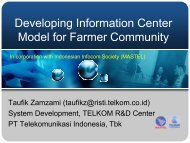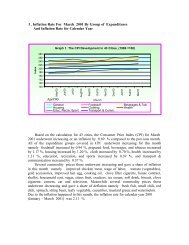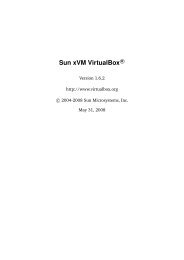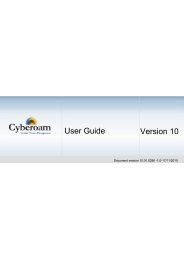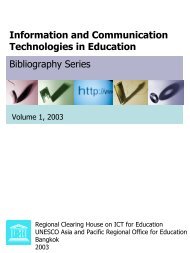Information and communication technologies in schools: a ...
Information and communication technologies in schools: a ...
Information and communication technologies in schools: a ...
You also want an ePaper? Increase the reach of your titles
YUMPU automatically turns print PDFs into web optimized ePapers that Google loves.
ICT IN SCHOOLS<br />
A HANDBOOK FOR TEACHER<br />
126<br />
Visual component of oral <strong>communication</strong><br />
The visual component of lectures is as important as <strong>in</strong> other cases of oral <strong>communication</strong>.<br />
At the same time, new ICT <strong>technologies</strong> are chang<strong>in</strong>g face-to-face<br />
lectur<strong>in</strong>g. For example, <strong>in</strong> the case of bigger audiences, the speaker’s face <strong>and</strong> figure<br />
can be captured by a video camera, magnified, <strong>and</strong> projected onto a screen.<br />
In some subjects, an important component of the lecture content is given by<br />
visual images other than that of the speaker. Most lecturers traditionally use a<br />
blackboard or an overhead projector. In some subjects like mathematics, this<br />
appears <strong>in</strong>evitable. A broader list of typical visual components <strong>in</strong>cludes:<br />
• key po<strong>in</strong>ts of a talk <strong>in</strong>dicated <strong>in</strong> a written form on a chalk- or whiteboard;<br />
• the derivation of mathematical formulas, as well as mathematical<br />
formulas accompany<strong>in</strong>g discussion of physical, biological, or economic<br />
issues;<br />
• chemical formulas <strong>and</strong> other, less important formalisms;<br />
• draw<strong>in</strong>gs <strong>and</strong> conceptual diagrams;<br />
• all k<strong>in</strong>ds of ready-made images (artistic pa<strong>in</strong>t<strong>in</strong>gs, photographs, book<br />
pages, technical draw<strong>in</strong>gs, maps) as illustrations; <strong>and</strong><br />
• real objects <strong>and</strong> processes (like experiments), if they are big enough to<br />
be seen by an audience.<br />
ICT extensions of this <strong>communication</strong> are based on projection technology.<br />
As noted <strong>in</strong> Chapter 2, a projector can greatly <strong>in</strong>crease the size of an image if the<br />
ambient light is not too bright.<br />
Now, a comb<strong>in</strong>ed computer <strong>and</strong> projector open new possibilities <strong>and</strong> generate<br />
a new culture of oral <strong>communication</strong> accompanied by screen images.<br />
In comparison with pre-computer lectures, this new technology allows the<br />
follow<strong>in</strong>g:<br />
• The speaker can comb<strong>in</strong>e pre-recorded images (<strong>in</strong>clud<strong>in</strong>g text) with<br />
images made dur<strong>in</strong>g a lecture. Pre-recorded video fragments can be<br />
<strong>in</strong>cluded accompanied by sounds if needed.<br />
• Images of real objects obta<strong>in</strong>ed via cameras can be downloaded to a<br />
computer or connected directly to the projector.


